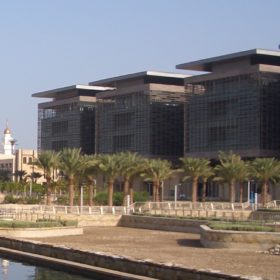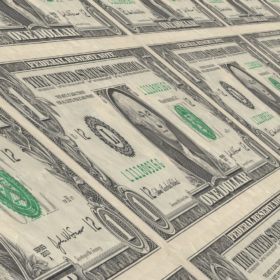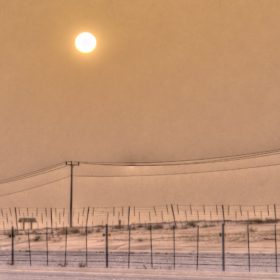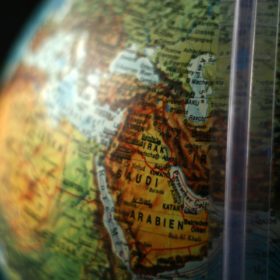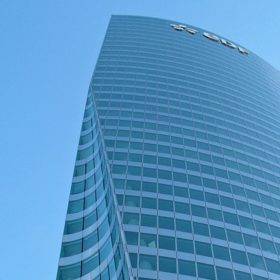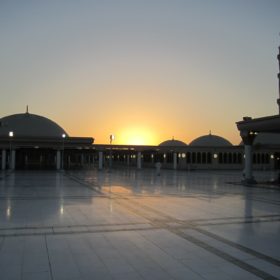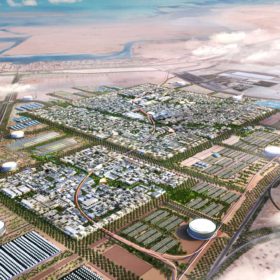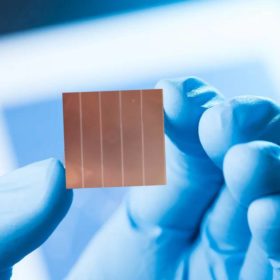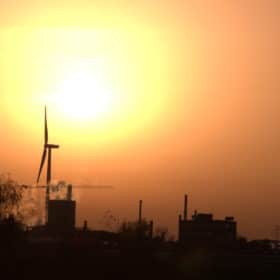Inverted perovskite solar cell with 22.8% efficiency
The cell features an open-circuit voltage of 1.1 V and a short-circuit current of 26 milliampere per cm-2, which the research team described as the best performance for an inverted perovskite cell based on single-crystal methylammonium lead triiodide. The device was built with a microns-thick absorber layer placed between an electron transport top layer and a hole-transport bottom layer.
China’s Covid recovery saw green bond issuance rebound in second half of 2020
The $18bn worth of sustainable finance instruments floated in the nation last year marked a retreat from previous highs but, with most of the bonds issued from July onwards, the recovery is under way, according to the IFC, which is anticipating a more-than-$100 billion sector in emerging markets over the next three years.
Larsen & Toubro begins building 300 MW solar plant in Saudi Arabia
India’s Larsen & Toubro has announced plans to provide EPC services to support the deployment of 300 MW of solar in Saudi Arabia, under a contract with a consortium involving Masdar, EDF Renewables, and Saudi Arabia’s Nesma.
Larsen & Toubro secures 1.5 GW solar EPC order in Saudi Arabia
Larsen & Toubro is set to work on the 1.5 GW Sudair plant – the largest solar project in Saudi Arabia to have a signed power purchase agreement in place. Upon completion, it will also be one of the biggest PV installations in the world.
EDF, Masdar secure 300 MW project in Saudi Arabia’s second PV tender thanks to bid of $0.01988/kWh
The French energy company said the project will come into operation in 2022. It will sell power to the Saudi Power Procurement Company under a 25-year PPA.
Saudi Arabia’s second PV tender draws world record low bid of $0.0104/kWh
The record low price was offered for the 600 MW Al Shuaiba PV IP project, which competed in the second round of the country’s procurement scheme for renewable energies.
A digital, solarized vision for the UAE
The United Arab Emirates (UAE) is the world’s sixth largest oil producer and the third-richest country in the world with a GDP per capita of US$57,744. Currently, it is petroleum and natural gas reliant; however, Economy with Vision 2021 is committed to establishing a green economy for sustainable development there, which includes a strong digitalization strategy.
Focus on temperature to reduce LCOE, says new study
A new model to assess the role of module temperature in PV power plant economics, developed by scientists in Saudi Arabia, finds that keeping modules cool could be an even more effective strategy to increasing energy yield than pursuing further gains in cell efficiency. The model finds that reducing module temperature by three degrees has a similar impact on energy yield to a 1% increase in conversion efficiency.
Perovskite solar cell with cesium-titanium dioxide nanotubes
A global research group has developed a perovskite PV cell with titanium dioxide nanotubes doped with cesium. It purportedly offers better short-circuit current and power conversion efficiency than cells without cesium nanoparticles. They say it has optimal thermal stability under temperatures up to 800 C.
Novel algorithm for integrating solar, wind, hydrogen
A new, nature-inspired algorithm has been applied by scientists in Egypt and Saudi Arabia to optimize the production of green hydrogen via solar and wind power generation. The proposed energy system consists of PV and wind power generation, a water electrolyzer, a tank of hydrogen gas, a fuel cell, and an inverter that brings the generated electricity to final consumers.
